#stenopterygius
Text
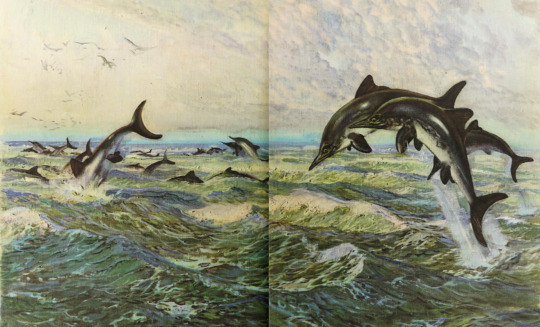
"The commonest Ichthyosaur of the Lower Jurassic seas was Stenopterygius quadriscissus; old specimens were particularly toothless and had a small head."
Prehistoric Sea Monsters. Written by Dr. Josef Augusta. Illustrated by Zdeněk Burian. 1966.
Internet Archive
292 notes
·
View notes
Text
In the spring of last year, I made several color reconstructions of marine reptiles for a thesis and presentation (it was about the reconstruction of marine reptiles) for a conference that was held in Ulyanovsk in September. The drawings were done in ballpoint pen (lineart) and Paint Tool Sai 2.0 (shadows and colors).

The first is reconstruction of Mixosaurus cornalianus, a widespread small Triassic ichthyosaur. I had already drawn a Mixosaurus in water earlier and even wanted to use it in the article, but later changed my mind, deciding that lateral reconstruction would better convey the appearance of soft tissues. This earlier drawing can bee seen here:

Both pieces are based on the fin impressions described in 2020 from a specimen found in the Middle Triassic rocks of the Bezano formation, Italy (www.researchgate.net/publicati…). This specimen has preserved the tissues of the dorsal and caudal fins. Both prints have thin collagen filaments, and at the base of the caudal fin, it was possible to detect the remains of smooth, scaleless skin. The fins have a triangular shape, and the dorsal one is associated with 15-23 trunk vertebrae. In other words, its position turned out to be more
forward then in reconstructions done before his paper.

The second is lateral reconstruction of the metriorhynchid Cricosaurus albersdoerferi, belonging to a widespread genus that inhabited the shallow seas of future Europe, Central America and Argentina. It was not a particularly large animal, reaching from 2 to 3.2 meters in length. Like the first reconstruction of a Cricosaurus, which I performed in the spring, this drawing is based on a specimen that preserved a large volume of soft tissue on the tail (upload.wikimedia.org/wikipedia…). Also shown here is the salt gland in the antorbital fenestra, the presence of which was previously indicated in Cricosaurus araucanensis and Dakosaurus andiniensis. The spring work with C. albersdoerferi can be seen below:
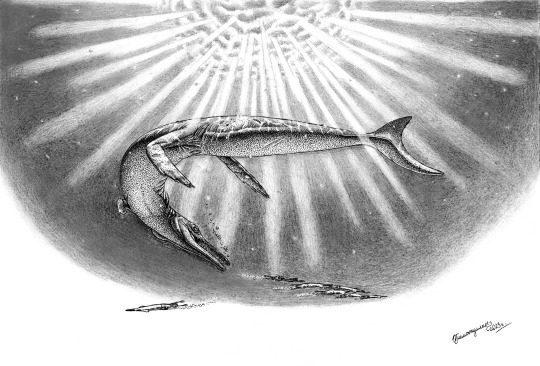

Plesiosaurs are mentioned too. This is reconstruction of the polycotylid Mauriciosaurus fernandezi from the Late Cretaceous of Mexico. A complete reptile skeleton preserved in fine-grained rocks was described by a team of paleontologists in 2017: www.researchgate.net/publicati… There are five types of soft tissue imprints around the bones. Among them are dark material, probably left from the walls of the peritoneum, dark gray traces of blubber and impressions of possible small scales. The impressions show that the animal's belly was covered with rectangular scales, which were mixed with inclusions of small fragments closer to the limbs. The scales of the living reptile were almost indistinguishable, so that the skin looked smooth. This beautifully preserved specimen showed that plesiosaurs had much more soft tissue than previously thought. The tail was especially fleshy. Fat deposits created a smooth, streamlined shape, ideal for an agile swimmer.
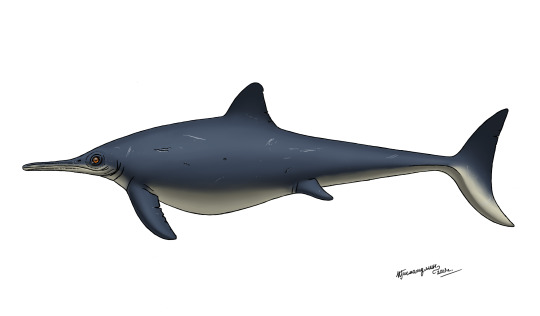
The last thesis drawing is this reconstruction of the famous Early Jurassic ichthyosaur Stenopterygius quadriscissus. Many of its skeletons of amazing preservation were found in the fine-grained limestones of Holzmaden, Germany. Some of them were discovered back in the 19th century, which made it possible to quickly correct previous ideas about ichthyosaurs. The Stenopterygius specimens retained soft tissue prints in the form of a bacterial film, which made it clear that they were fish-like creatures with a dorsal fin and a crescent tail. They re still attract the attention of researchers. In 2018, the skin structure of one partial specimen was studied: www.researchgate.net/publicati… A fossilized blubber was described, similar in microstructure to that of marine mammals and leatherback turtles. This led to the conclusion that ichthyosaurs were reptiles with a high metabolism, which required fat insulation. Blubber allowed ichthyosaurs to travel across the oceans, swimming even into the cold polar waters. In addition, this Stenopterygius had pigment cells - melanophores. They were absent on the ventral side, which means that the Stenopterygius had a dark back and a light belly. This countershading coloring is typical of today's marine vertebrates and serves as a camouflage.
I did also three works in fully traditional style, with pens and pencils, but I'll show them in the separate post. :)
#mixosaurus#stenopterygius#ichthyosaurs#cricosaurus#metriorhynchidae#mauriciosaurus#polycotylidae#plesiosaur#mesozoic marine reptiles#paleoart
31 notes
·
View notes
Text
Ichthyosaur (i did just kinda a general ichthyosaur, possibly it’s Ichthyosaurus, but also maybe Stenopterygius)
Late Triassic to Jurassic. 288-112 MYA.
This is not a dinosaur!
#video#my art#art#paleontology#paleoart#science#not a dinosaur#marine reptile#ichthyosaur#ichthyosaurus#stenopterygius
9 notes
·
View notes
Text
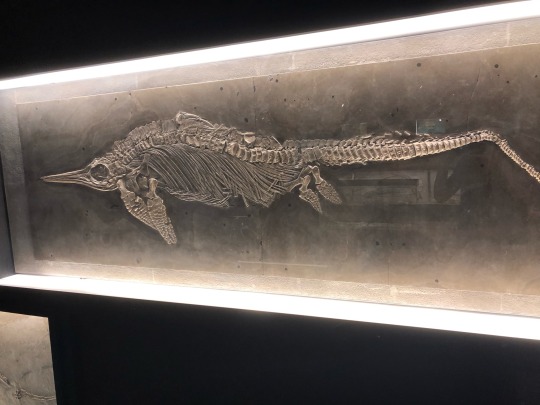
Stenopterygius.
19 notes
·
View notes
Photo

Jurassic June day 14. . Stenopterygius. . An Ichthyosaur, a type of marine reptile, that lived during the Jurassic period in the oceans around what is now Europe. . Done for the book “Traumreise In Die Urzeit” by Markus Peter Kretschmer. . . . . . . . . . . . . . . . . . . . . #jurassicjune #jurassicjune2022 #ichthyosaur #stenopterygius #marinereptile #marinelife #mesozoic #prehistoric #prehistoricanimals #oceananimals #fossils #jurassic #jurassicperiod #notadinosaur #dinoart #dinoartist #dinosaurart #paleoart #dinoartwork #dinosaurartwork https://www.instagram.com/p/CezJIwxq8bx/?igshid=NGJjMDIxMWI=
#jurassicjune#jurassicjune2022#ichthyosaur#stenopterygius#marinereptile#marinelife#mesozoic#prehistoric#prehistoricanimals#oceananimals#fossils#jurassic#jurassicperiod#notadinosaur#dinoart#dinoartist#dinosaurart#paleoart#dinoartwork#dinosaurartwork
66 notes
·
View notes
Text
#219
Rygius
Air
Mid-range
Small
Lp: Low
Atk: Average
Def: Average
Acc: Average
Spd: High
Support: Enemy -Atk 40%, -Def 40%, Spd 20%
A vivosaur with moves that lower defense and excite foes. Team it up with certain other Vivosaurs to unlock its true potential.
-
Stenopterygius
13 feet
Mesozoic Jurassic
Diet: Carnivore
Location: Germany
Had counter shading to keep it camouflaged in the open ocean.
-
Similar to Sopteryx, we actually have examples of what Stenopterygius looked like - they were counter-shaded, meaning they had darker coloration near the top, and lighter near the bottom. While Rygius is counter-shaded, it also has some spiral patterns on its sides, and its otherwise-gray body has a sea green tint.
Rygius is found in normal fossil rocks. It doesn't have a super evolver.
#fossil fighters#fossil fighters revival#vivosaurs#fanmade vivosaurs#original vivosaurs#air vivosaurs#stenopterygius
2 notes
·
View notes
Text

Pencil drawing of a Stenopterygius family and an Ammonite
#paleoart#paleontology#icthyosauria#icthyosaur#ammonite#jurassic period#palaeoblr#palaeontology#palaeoart#icthyosaurs#marine paleontology
42 notes
·
View notes
Text








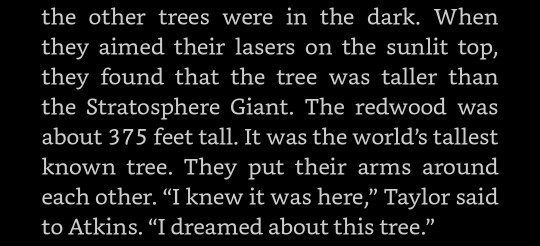
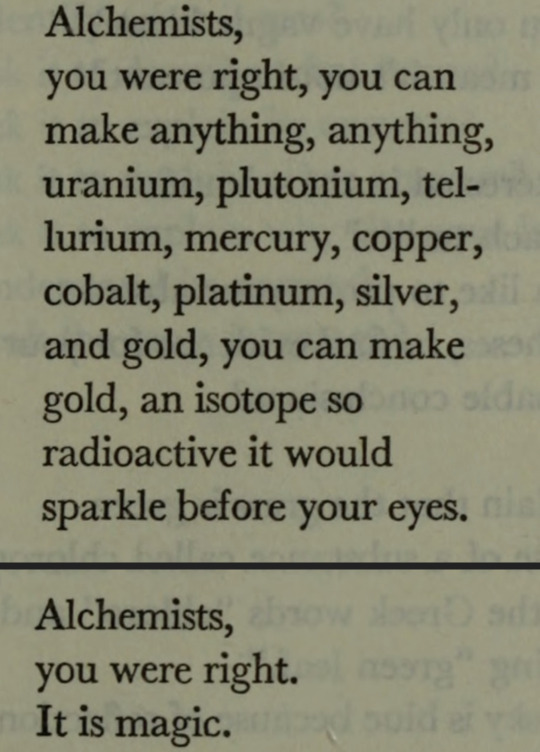
The scientist
"Planetarium," Adrienne Rich // The Age of Wonder, Richard Holmes // "The Archaeopteryx's Song," Edwin Morgan // Fossil of a Stenopterygius that died giving birth, Wyoming Dinosaur Institute (my picture) // Wikipedia entry disambiguation page for "dynamic instability" // Tumblr exchange between @derinthemadscientist , @radioactivepigeons , and @alithographica // photos from my own lab bench // "Evolution," Linda Bierds // The Wild Trees, Richard Preston // "A Toast to the Alchemists," Laura Giplin
#i really hate that mobile only lets me add ten images#but at the same time it's probably a good thing otherwise this would be way way too long#intertextuality#pontifications and creations#endless forms most beautiful
26 notes
·
View notes
Photo
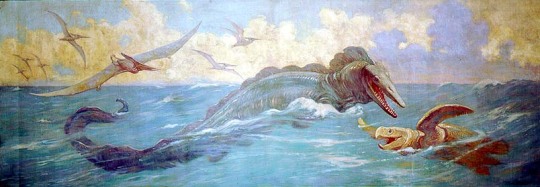


assorted charles r. knight paintings
tylosaurus, protostega, pteranodon,
plesiosaurus, stenopterygius
orthoceras & trilobites
#by far my biggest inspiration as far as colors and landscapes. sir... your muted tones...#please correct me if i got the genera wrong o_o
11 notes
·
View notes
Text

A remarquable Ichthyosaure Stenopterygius quadriscissus ; Lias (180 million d'années), Lias epsilon, Holzmaden, Allemagne
Sotheby’s
22 notes
·
View notes
Text
L'ITTIOSAURO

L'ittiosauro (gen. Ichthyosaurus) è un rettile marino estinto, vissuto nel Giurassico inferiore in Europa. Questo animale dà il nome all'intero gruppo degli ittiosauri.
D E S C R I Z I O N E
Tra tutti gli ittiosauri, l'ittiosauro (ichthyosaurus) vero e proprio è uno tra i meglio conosciuti, e i suoi fossili sono relativamente comuni nelle rocce della prima parte del Giurassico in Inghilterra e in Germania. Alcuni scheletri mostrano chiaramente l'impronta della superficie esterna del corpo, che dimostra come l'ittiosauro fosse dotato di una pinna carnosa sul dorso e di una pinna a mezzaluna al termine della coda, sorretta dalle ultime vertebre caudali fortemente articolate verso il basso. Impronte simili sono state rinvenute anche sui resti dell'affine Stenopterygius, a dimostrazione del fatto che molti ittiosauri possedevano strutture analoghe. Lungo circa 2 metri, l'ittiosauro non era certo un animale di grandi dimensioni; le sue prede dovevano essere piccoli pesci o molluschi a corpo molle come i cefalopodi, che venivano catturati dalle lunghe fauci dell'ittiosauro e strette fra i lunghi denti conici. Coproliti di ittiosauri contenenti scaglie di pesce (Pholidophorus) e numerosissimi uncini di tentacoli di cefalopodi (belemniti) sono la prova della dieta di questi animali.
Le ossa dell'orecchio dell'ittiosauro erano molto robuste, e probabilmente conducevano le vibrazioni dell'acqua all'orecchio interno. Tuttavia, il senso principale a cui si affidava l'ittiosauro durante la caccia doveva essere la vista: questo predatore possedeva enormi occhi tondi molto sensibili, protetti da ossa che andavano a formare una struttura chiamata anello sclerotico. Altri ittiosauri (come Ophthalmosaurus) possedevano occhi ancora più grandi.
L A S C O P E R T A
L'ittiosauro fu il primo tra i rettili marini del Mesozoico ad essere scoperto. Il primo ritrovamento fu un bellissimo scheletro trovato da Mary Anning, sulle scogliere di Lyme Regis, nel 1810. La maggior parte degli studiosi ritenne che questi resti erano appartenuti a un coccodrillo, visto che in un primo momento fu rinvenuto il solo cranio. Solo in un secondo tempo, quando tutto lo scheletro venne alla luce, l'animale venne studiato nei particolari e gli venne attribuito il nome di Ichthyosaurus (“lucertola - pesce”), non senza alcune dispute paleontologiche. Da quel momento in poi, moltissimi ritrovamenti di ittiosauri in varie parti del mondo finirono sotto il nome di Ichthyosaurus, trasformando questo taxon in un vero e proprio “cestino dei rifiuti”. Solo dopo accurate analisi compiute verso la fine del XX secolo, le specie comunemente accettate appartenenti al genere sono state ridotte a tre: I. communis (la specie tipo), I. breviceps e I. conybeari.
F O N T E : w i k i p e d i a
1 note
·
View note
Text
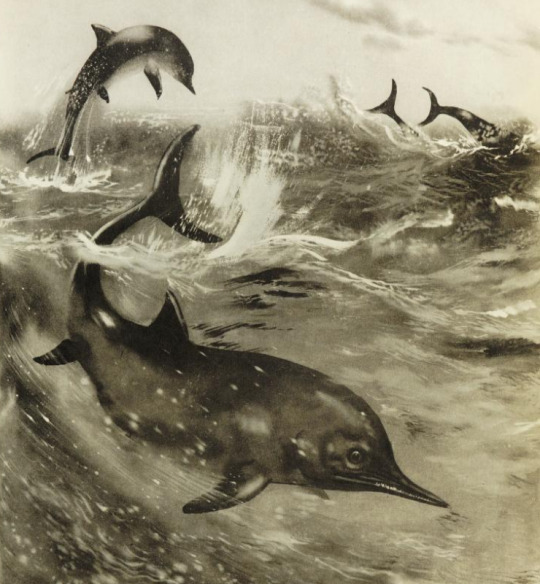
"The ichthyosaur Stenopterygius hauffianus from Lower Jurassic strata round Holzmaden had a long, thin body, with a short snout and relatively short paddle-like limbs. It was about 6 feet long."
Prehistoric Sea Monsters. Written by Dr. Josef Augusta. Illustrated by Zdeněk Burian. 1966.
Internet Archive
158 notes
·
View notes
Text
"humans are inherently selfish and cruel creatures. we hold no kindness and we never will."
babe i'm crying at almost 2:30 am over the fact a stenopterygius quadriscissus died in the middle of giving birth
0 notes
Text
December 23rd
Box #23 in our count down is Stenopterygius…
(more…)

View On WordPress
#advent#anchiornis#anurognathus#Asteracanthus#Attenborosaurus#Castorocauda#Christmas#coroniceras#countdown#Dakosaurus#dinosaur#Dysalotosaurus#europasaurus#Gnathosaurus#Guanlong#heterodontosaurus#Holophagus#illustration#Ischyodus#Kentrosaurus#Lobolytoceras#Mamenchisaurus#Ostafrikasaurus#Rhomaleosaurus#Scelidosaurus#Stenopterygius#Volaticotherium#Yinlong
0 notes
Text

Stenopterygius, an ichtyosaur!
30 notes
·
View notes
Photo

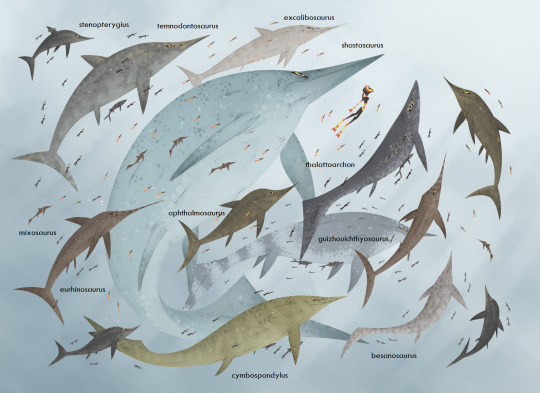
It’s funny that mosasaurs and pliosaurs frequently get over exaggerated in size when it was really the ichthyosaurs who were the largest of the marine reptiles, thought it would be fun to depict just how impressive and varied these guys were.
#art#my art#digital art#paleoart#paleontology#ichthyosaur#reptiles#fish#sea#ocean#stenopterygius#temnodontosaurus#excalibosaurus#shastasaurus#mixosaurus#ophthalmosaurus#thalattoarchon#guizhouichthyosaurus#eurhinosaurus#cymbospondylus#besanosaurus
3K notes
·
View notes